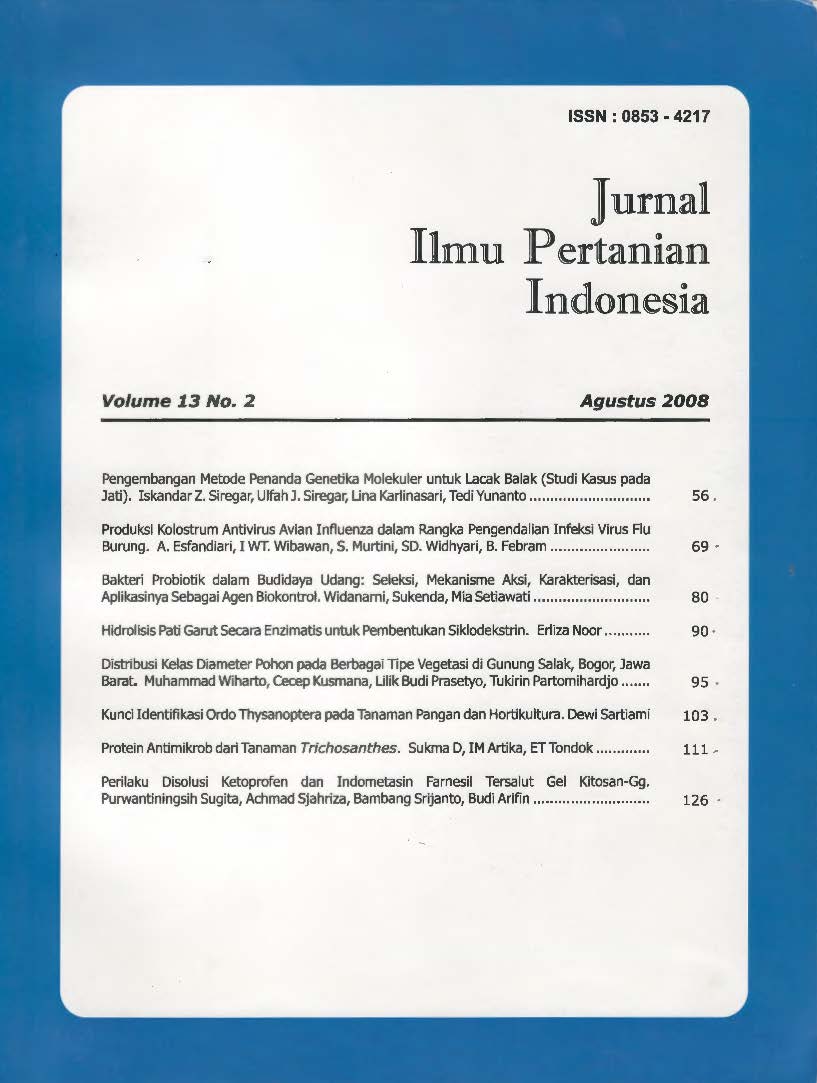Distribusi Kelas Diameter Pohon pada Berbagai Tipe Veget Asi di Gunung Salak, Bogor, Jawa Barat
Abstract
The research objective was to study tree vegetation structure based on diameter class distribution at some vegetation types on Salak Mountain. Sample was taken at north, south, east, and west facing slope of Salai Mountain using line transect. Systematic sampling with random start was used to lay the transetcs. Measuring stem diameter at breast height was done in order to study the tree diameter class distribution. Non-parametric U Man Whitney statistic was used to know whether there was a different in number of individual at all diameter class in each vegetation type. At mix forest and plantation forest, the tree diameter class distribution forming J curve shape. At bamboo forest, the individual number increase at the highest class diameter. The number of individual trees ware highest at mix forest and lowest at bamboo forest.Keywords: diameter class, J reserve curve, mount salak, vegetation type
Downloads
This journal is published under the terms of the Creative Commons Attribution-NonCommercial 4.0 International License. Authors who publish with this journal agree to the following terms: Authors retain copyright and grant the journal right of first publication with the work simultaneously licensed under a Creative Commons Attribution-NonCommercial 4.0 International License. Attribution — You must give appropriate credit, provide a link to the license, and indicate if changes were made. You may do so in any reasonable manner, but not in any way that suggests the licensor endorses you or your use. NonCommercial — You may not use the material for commercial purposes.



















